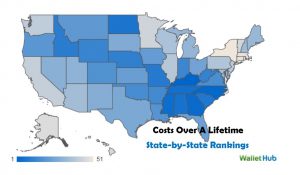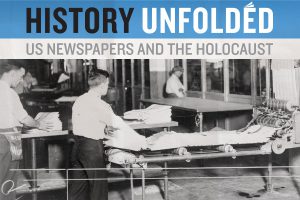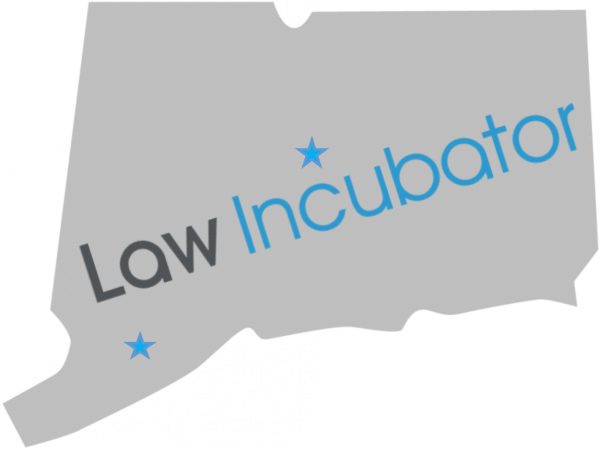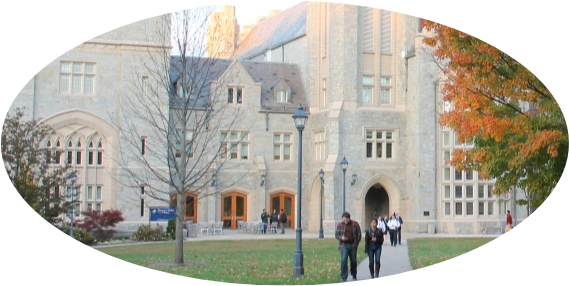Recognizing that the sex industry – especially when it involves underage children – is a form of human trafficking, the Connecticut Trafficking in Persons Council (TIP) is making several legislative recommendations aimed at shifting the onus for the crime of prostitution from the prostitute to “the demand side” – the buyers of sex.
On National Human Trafficking Awareness Day, the TIP Council released its Annual Report and recommendations for the state legislature, and launched a new initiative and website, www.enddemandct.org.
“Conversations about sex trafficking almost exclusively disregard the role of the individual buying sex—the ‘john,’” says Jillian Gilchrest, chair of Connecticut’s Trafficking in Persons Council and Director of Health Professional Outreach at the Connecticut Coalition Against Domestic Violence. “The sex trafficking of Connecticut’s women, men, and children is driven by demand for the commercial sex acts they perform. Put simply, without ‘buyers’ to purchase sex there would be no sex-for-pay industry. So, we are embarking on an ‘End Demand’ campaign to bring much needed attention to those buying sex who create the demand that fuels sex trafficking.”
The TIP report questions why, since Connecticut enacted the felony crime of patronizing sex from a minor in 2013, there have been no arrests or convictions for the felony. Significantly, DCF has seen an increase in the trafficking of children; currently, there are 456 referrals for children at high risk of trafficking.
The report also calls on Connecticut lawmakers, state agencies, and advocates to work together to better understand the demand side of sex trafficking in order to effectively prevent this crime from happening. This begins, the report explains, with creating awareness, since more often than not, those buying sex are left out of conversations about human trafficking. With the use of social media, traditional media, and advertising, the TIP Council indicated it aims to raise public awareness about the individuals in our state who choose to pay to sexually abuse children and exploited individuals.
The report indicates that law enforcement and State’s prosecutors argue that those buying sex with children and exploited adults can be charged with other crimes, such as sexual assault in the second degree or risk of injury. The Council will be looking into this, the report notes, to better understand if buyers of sex are being arrested, and if not, why.
In addition, the report outlined that with over 100 members, the Department of Children and Families (DCF) Human Anti-trafficking Response Team (HART) comprises multi-department, multiagency partners, various levels of law enforcement, the provider community, faith-based network, among others. In 2015, DCF received 133 referrals of youth who were at risk or confirmed victims of human trafficking. As of September 2016, DCF has received 151 referrals of youth who were at risk or confirmed victims of human trafficking, the report indicated.
 Tammy Sneed, Director of Gender Responsive Adolescent Services at Department of Children and Families and co-chair of DCF’s Human Anti-Trafficking Response Team, said: “Reports of children suspected to be victims of domestic minor sex trafficking are increasing every year -- and, in 2016, there were just under 200 such referrals. For every child victim, the number of buyers on a given day in Connecticut is unfathomable. Some children report 10 to 15 buyers per night, which leads us to estimate that a minimum of 2,000 buyers in Connecticut bought sex from children last year.”
Tammy Sneed, Director of Gender Responsive Adolescent Services at Department of Children and Families and co-chair of DCF’s Human Anti-Trafficking Response Team, said: “Reports of children suspected to be victims of domestic minor sex trafficking are increasing every year -- and, in 2016, there were just under 200 such referrals. For every child victim, the number of buyers on a given day in Connecticut is unfathomable. Some children report 10 to 15 buyers per night, which leads us to estimate that a minimum of 2,000 buyers in Connecticut bought sex from children last year.”
In the report, the Council recommends:
- the Connecticut Sentencing Commission, Special Committee on Sex Offender, Subcommittee on Sex Offender Sentencing consider whether to include 53a-192a. Trafficking in persons and 53a-83(c), Patronizing a prostitute when such other person is under the age of 18, to the Registration of Sex Offender statutes;
- further discussion and inquiry on why there have not been any convictions under Sec. 53a-83(c), Patronizing a prostitute under the age of 18, effective 2013;
- further discussion on increasing the penalty for Sec. 53a-83(c), patronizing a prostitute under the age of 18, to align with similar sexual crimes against children; and
- further discussion on revising Sec. 53a-192a, Trafficking in persons, to include recruitment, harboring, transportation, provision, obtaining, patronizing, or soliciting of a person for the purpose of a commercial sex act and increasing penalties to recognize the severity of the crime.
The Trafficking in Persons (TIP) Council is convened by the Commission on Women, Children and Seniors and chaired by the Connecticut Coalition Against Domestic Violence (CCADV). The Council was formerly run by the Permanent Commission on the Status of Women. The council consists of members from a diversity of backgrounds, including representatives from state agencies, the judicial branch, law enforcement, motor transport and community based organizations that work with victims of sexual and domestic violence and immigrants and refugees, and address behavioral health needs and social justice and human rights.
 “Demand keeps sexual exploitation and trafficking profitable,” says Beth Hamilton, associate director of the Alliance to End Sexual Violence (formerly CONNSACS). “We’ve started seeing the criminal justice system hold traffickers responsible, but we do not often see the people who purchase sex being held accountable for their role in keeping the industry thriving. If we want to end commercial sexual exploitation, we need to focus on ending demand and creating survivor-centered services.”
“Demand keeps sexual exploitation and trafficking profitable,” says Beth Hamilton, associate director of the Alliance to End Sexual Violence (formerly CONNSACS). “We’ve started seeing the criminal justice system hold traffickers responsible, but we do not often see the people who purchase sex being held accountable for their role in keeping the industry thriving. If we want to end commercial sexual exploitation, we need to focus on ending demand and creating survivor-centered services.”
In Connecticut, a person is guilty of trafficking in persons when such person compels or induces another person to engage in sexual contact or provide labor or services by means of force, threat of force, fraud or coercion. Anyone under the age of 18 engaged in commercial sexual exploitation is deemed a victim of domestic minor sex trafficking irrespective of the use of force, threat of force, fraud or coercion.
The report points out that “For many people, sex and labor trafficking bring visions of foreign places and people, but this idea is false. In reality, sex and labor trafficking are happening in the state, to Connecticut residents.”


 Zippia first researched detailed data “on all places in Connecticut. However, in order to properly compare places in an apples-to-apples manner, we set a minimum population threshold of 5,000 people.” That left 46 places in Connecticut to analyze.
Zippia first researched detailed data “on all places in Connecticut. However, in order to properly compare places in an apples-to-apples manner, we set a minimum population threshold of 5,000 people.” That left 46 places in Connecticut to analyze.



 The report, “Broken Promises to our Children: A State-by-State Look at the 1998 State Tobacco Settlement 17 Years Later," said the state was spending $1.2 million in FY 2016 to fight tobacco use. That's compared to an estimated marketing investment of $80.4 million by tobacco companies in Connecticut that year. The national average shows a margin of 20.1 to 1. At that time, Connecticut ranked 38th in spending on a percentage basis. The state has consistently spend
The report, “Broken Promises to our Children: A State-by-State Look at the 1998 State Tobacco Settlement 17 Years Later," said the state was spending $1.2 million in FY 2016 to fight tobacco use. That's compared to an estimated marketing investment of $80.4 million by tobacco companies in Connecticut that year. The national average shows a margin of 20.1 to 1. At that time, Connecticut ranked 38th in spending on a percentage basis. The state has consistently spend 
 As of January 9, 2017, 920 participants from across the country had submitted more than 6,300 articles from their local newspapers. The articles were published in newspapers located in all 50 states and the District of Columbia, and represent news articles, editorials, letters to the editor, political cartoons, and advertisements.
Individuals are urged to check with their local museum, historical society, or library to see if they will be hosting a research group. A classroom or school, a temple or church, a museum or library, or other community organizations can participate. Individuals can also participate. Organizations
As of January 9, 2017, 920 participants from across the country had submitted more than 6,300 articles from their local newspapers. The articles were published in newspapers located in all 50 states and the District of Columbia, and represent news articles, editorials, letters to the editor, political cartoons, and advertisements.
Individuals are urged to check with their local museum, historical society, or library to see if they will be hosting a research group. A classroom or school, a temple or church, a museum or library, or other community organizations can participate. Individuals can also participate. Organizations  can email Liz Shapiro at
can email Liz Shapiro at 
 uded in the College Scorecard among bachelor’s degree granting institutions are Lincoln College of New England ($31,800); Mitchell College ($30,400); and Goodwin College ($27,500).
uded in the College Scorecard among bachelor’s degree granting institutions are Lincoln College of New England ($31,800); Mitchell College ($30,400); and Goodwin College ($27,500). The College Scorecard, recently updated by the federal agency, is designed “to ensure that students and families have the most up-to-date, comprehensive, and reliable information available on colleges, all in an easy-to-understand format.” The website allows visitors to sort and filter search results to compare schools to assist students in deciding “which college makes the most sense when considering the typical costs, average student loan amount, students’ ability to repay their loans, and their future earnings,” the website materials explain.
The College Scorecard, recently updated by the federal agency, is designed “to ensure that students and families have the most up-to-date, comprehensive, and reliable information available on colleges, all in an easy-to-understand format.” The website allows visitors to sort and filter search results to compare schools to assist students in deciding “which college makes the most sense when considering the typical costs, average student loan amount, students’ ability to repay their loans, and their future earnings,” the website materials explain.

 Connecticut must strengthen its crosswalk legislation to align with best practices for public health and safety. As a state, we would be well served to revisit our vulnerable user laws, increasing penalties for motorists who injure or kill walkers or cyclists. Ours is one of only 10 states that doesn’t require motorists to refrain from opening a vehicle door until conditions are safe; this, too, must change. Boston, Massachusetts
Connecticut must strengthen its crosswalk legislation to align with best practices for public health and safety. As a state, we would be well served to revisit our vulnerable user laws, increasing penalties for motorists who injure or kill walkers or cyclists. Ours is one of only 10 states that doesn’t require motorists to refrain from opening a vehicle door until conditions are safe; this, too, must change. Boston, Massachusetts 


 Clients who qualify for services at the Hartford incubator will be those whose incomes exceed the limits for legal aid but fall within three times the federal poverty level. For a family of four, this would mean a maximum household income of $72,900. Clients wishing to apply for services may do so beginning in February, when information will be available at the center’s website: cclc.law.uconn.edu.
Clients who qualify for services at the Hartford incubator will be those whose incomes exceed the limits for legal aid but fall within three times the federal poverty level. For a family of four, this would mean a maximum household income of $72,900. Clients wishing to apply for services may do so beginning in February, when information will be available at the center’s website: cclc.law.uconn.edu.

 Tammy Sneed, Director of Gender Responsive Adolescent Services at Department of Children and Families and co-chair of DCF’s Human Anti-Trafficking Response Team, said: “Reports of children suspected to be victims of domestic minor sex trafficking are increasing every year -- and, in 2016, there were just under 200 such referrals. For every child victim, the number of buyers on a given day in Connecticut is unfathomable. Some children report 10 to 15 buyers per night, which leads us to estimate that a minimum of 2,000 buyers in Connecticut bought sex from children last year.”
Tammy Sneed, Director of Gender Responsive Adolescent Services at Department of Children and Families and co-chair of DCF’s Human Anti-Trafficking Response Team, said: “Reports of children suspected to be victims of domestic minor sex trafficking are increasing every year -- and, in 2016, there were just under 200 such referrals. For every child victim, the number of buyers on a given day in Connecticut is unfathomable. Some children report 10 to 15 buyers per night, which leads us to estimate that a minimum of 2,000 buyers in Connecticut bought sex from children last year.” “Demand keeps sexual exploitation and trafficking profitable,” says Beth Hamilton, associate director of the Alliance to End Sexual Violence (formerly CONNSACS). “We’ve started seeing the criminal justice system hold traffickers responsible, but we do not often see the people who purchase sex being held accountable for their role in keeping the industry thriving. If we want to end commercial sexual exploitation, we need to focus on ending demand and creating survivor-centered services.”
“Demand keeps sexual exploitation and trafficking profitable,” says Beth Hamilton, associate director of the Alliance to End Sexual Violence (formerly CONNSACS). “We’ve started seeing the criminal justice system hold traffickers responsible, but we do not often see the people who purchase sex being held accountable for their role in keeping the industry thriving. If we want to end commercial sexual exploitation, we need to focus on ending demand and creating survivor-centered services.”
 In 12 states, including Connecticut, average debt was more than $30,000 – up from six states the year before. High-debt states remain concentrated in the Northeast and Midwest, with low-debt states mainly in the West. Average debt at the college level varies even more, from a low of $3,000 to a high of $53,000, and the share graduating with loans ranges from seven percent to 100 percent.
In 12 states, including Connecticut, average debt was more than $30,000 – up from six states the year before. High-debt states remain concentrated in the Northeast and Midwest, with low-debt states mainly in the West. Average debt at the college level varies even more, from a low of $3,000 to a high of $53,000, and the share graduating with loans ranges from seven percent to 100 percent.




























